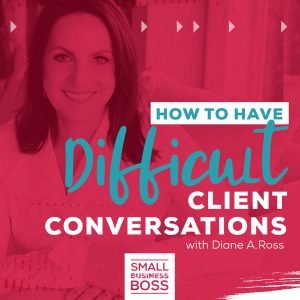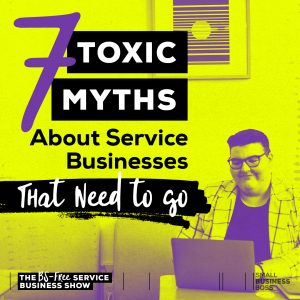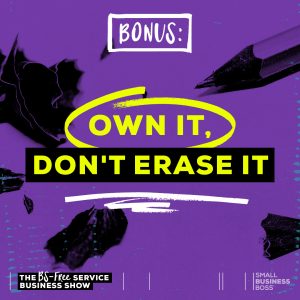
Search the site:
Design Your Services: What’s the Right Offer for You & Your Clients?
If you’ve been in the online business world for more than six months, you’ve likely watched trends come and go about what type of service you should offer. From VIP days to projects to flat-rate pricing, there are countless options that tend to fall in and out of favor. In this episode, we’re exploring how to design your services so you provide the right offer for you and your clients.
When it comes to offering services, I know there are a few key reasons that people decide to pack it in. From being burnt out to feeling like there’s an income cap, many service providers are lured away into something “easier” without realizing there are so many other options available to them.
Honestly, it makes me sad, as they literally don’t know that they have so many other options, and that they don’t have to believe the hype of celebrity entrepreneurs who make ridiculous promises about what another business model can do for them.
I’ve talked about this before but there’s this good/bad binary around service businesses, and much of that is focused on the fact you need to move away from them to get what you really want.
My experience has been that running a service business has given me more of what I really want, and it aligns with how I want to work. And a big reason that’s even been possible is that I’ve explored a wide variety of ways of working over the past 15 plus years as my own boss.
In this episode, I’m going to share some possibilities with you. Some may be well-known to you and others may be brand new, but my goal is to get you thinking about what will work best for you AND for your clients.
Considerations When Designing Your Service
Before we dive into different options, I want to quickly talk about what you should consider as you design your service. It’s easy to look at the trendiest new type of service and think it’s right for you as it’s being hyped up, but the reality is we need to slow down and consider what will work best for everyone involved.
What Works Best for You?
Before you decide anything, start by figuring out how you’ll best work. Do you like short sprints, or long-term relationships? Do you work well under pressure or do you need more time to process?
Don’t fall into the trap of picking a service as it seems easy without assessing if it’s aligned with how you like to work so you’ll show up at your absolute best.
What Works Best for Clients?
Next up, when you offer services, you need to consider what will best serve the client. It’s hard to sell a service, let alone get results, if you can’t get potential clients to buy-in to how it works.
Assess how the service can be set up to get the best possible result for the client. Sometimes the best result will come from speed, other times from going slow. It may be working intensely, or following a longer, more structured process.
There’s no right or wrong answer, but it’s so easy to design a service based on what we want, while forgetting about what will deliver the desired result for the client.
What are the Marketing and Sales Requirements?
Finally, you’ll want to dig into what’s required for marketing and selling each type of service as that may quickly help you decide what the best option is.
If you do more short-term projects, you’ll likely need to do more marketing in order to have a steady flow of clients. If you do longer-term retainer engagements, you’ll likely need to do less marketing overall.
Again, there’s no right or wrong, but this is a critical consideration that’s easily overlooked by so many service providers. Designing your dream service is one thing, but you need to be ready to market and sell it with confidence in order for it to work.
Common Types of Service Business Offers
Next up, let’s get into some of the most common types of service business offers, including what they are, and the benefits of each one. I’m also going to share some examples and my own experiences to help put a real-world spin on this.
Billing By the Hour
This is definitely one of the most common, but most maligned options out there. And I get it, hourly billing can be tricky and it’s often viewed as transactional.
What often gets missing in the conversation about hourly billing is how simple it can be to sell (especially if you’re just starting out) as people understand the concept of paying for hours.
Technically, with this type of offer you’re trading time for dollars, but I want to be clear that if we’re working, we’re always trading our time and talents for money. That’s how the system works.
The other benefit of this type of engagement is that you can have stronger boundaries around the scope of work as it’s capped by hours or budget. In my experience, this has usually made the scope creep conversation go better with clients.
On the flip side, that’s also where it can go awry as some clients have no concept of how long things really take and view you as padding your hours. It’s always a possibility, but I’d also argue this type of client will push the limit of any arrangement that’s in place.
Hourly Packages or Blocks of Hours
Hourly packages are a way to make hourly billing easier to manage and to ensure you get paid upfront for the hours you’re going to work. That way there’s a clear understanding of what’s to be done and how many hours it will take.
It protects you and sets a boundary with the client about the hours involved.
With hourly packages, you can bill these monthly, quarterly or in whatever increment works best for you. I highly recommend that you do have an expiry on hours blocks, and that they’re pre-paid and non-refundable.
In the past, this model worked really well for tech projects we were doing where it was unclear what would really be needed. It helped ensure we didn’t get screwed over trying to fix something the client thought would be five minutes when it was really a five hour one.
Flat Rate Packages or Projects
If you work in a world with set deliverables, flat rate packages or projects are probably a great fit for you. You’re able to charge a specific price based on defined deliverables and your specific process.
In many ways, this type of package is my favorite as it’s easy to manage and execute. Where flat rate packages can bite you is if you’re in a situation where scope creep is possible and you don’t have clear boundaries. With this, you need to include a set number of revisions and carefully manage the entire process so the client isn’t taking up far more time than expected.
I’ve had great experiences with this one, and some not-so great ones. With things like a set number of blog posts per month, it’s been a big winner, but with projects like websites it never worked as something would always take things off track.
For many of my clients that offer coaching, this type of offer works great for them. They’ll have a package with a set number of calls, as well as additional support and resources.
Retainers
You’ve probably heard the term retainer used in different ways, so I want to chat quickly about what a retainer is. There are two specific approaches to retainers. The first is where someone pays you a set amount in order to “retain” your services and then you bill against that. This is a common model used by lawyers and professional service providers.
The other approach is having ongoing, monthly commitments to work with clients. This may be either for a specific number of hours or a predefined set of deliverables.
When it comes to hours-based retainers, I’m a big fan of using an “up to X hours” approach so they’re aware that we may not use all the hours, but as a retainer client they’re getting a preferred hourly rate. Since introducing that approach we’ve been able to eliminate awkward conversations about carry-on hours and many times we reap the benefits of being efficient in the work we create and deliver to clients.
With deliverable based retainers, I’ve found this works really well if things are highly repeatable and systematized. If things change month-by-month it can be trickier to navigate what will (or won’t) be included, and hours may be easier for everyone to manage.
I’m a huge fan of retainers, and most agencies I know work in this model as it ensures continuity month after month. Plus, it helps reduce the needs to focus as much on lead gen and there are many process efficiencies gained by working with clients longer-term.
Strategy or Consulting Gigs
Strategy only or consulting type gigs are often overlooked by service providers, but they’re definitely worth considering. Over the years I’ve done a number of these types of engagements and they’ve been very lucrative.
This type of offer works really well when you have clients who value strategy and will pay for someone to come in and tell them what to do. It sounds overly simplistic, but you’re literally being paid for your expertise and to “consult” on their needs.
This could be done for everything from team management to brand strategy to specific tools. Think of it was being the special guest star who gets paid to come in and boost ratings. (Or in your case, fix specific problems.)
This type of consulting can be done for both B2B and B2E businesses and structured as a short-term engagement where you dig into something specific and then provide your recommendations.
Plus, this type of work is often a gateway into ongoing work with a client as they’ll need help implementing.
Day Rates
The last couple of years I’ve heard a lot about day rates or VIP days in the online space, and I want to point out that this as an offer is nothing new. It’s a classic consulting approach used by many types of organizations.
It’s something I often did for clients in my agency days, and when I was freelancing. They’d literally buy my day for a specific project or event so that would have my full focus.
As an offer, an intensive or day-bound gig can be very alluring, but it’s important to ensure that it will work best for you and the client. This can be a very intense way to work, and you need to know that you can show up and perform.
Also, you need to know that you can deliver what the client wants in the matter of hours, which in some cases may not be ideal.
If you like the concept of a short, fast engagement with clients, consider how you can take the idea and make it your own. My client Connie at Pixality Design has this same idea but they do a website in a week.
Since last Fall, I’ve been doing more half-day intensives with people for Small Business Boss and it’s been fun for me, but I can easily see how this model isn’t great if you need time to process or work through things.
Group Programs
I debated if I should include group programs as an offer for service businesses but I do believe it belongs with this as there are some things that will work best for us and our clients by being done in a group setting.
What I’m not talking about here are courses that have a “group” element added as a way to double or triple the price. I’m talking about a program that’s intentionally designed to be a small group experience as it benefits the participants and it’s very high touch.
There’s a lot to consider when it comes to group programs, and I will say this: never, ever do this type of offer purely for the money. There’s usually much more effort from a marketing and sales perspective that’s required, and there’s a unique set of skills required to run and facilitate a group.
Ask me how I know. It’s because I’ve lived it. I’ve been running group programs and masterminds since 2015, and it’s taken me years to get to the point where I can market and then fill these programs without feeling like it’s a major challenge.
Plus, there’s a lot of care that needs to go into any group program to ensure everyone is a good fit, there are boundaries in place and it’s a space that’s healthy and inclusive. I know I’ve learned some hard lessons along the way which I’m grateful for.
What Offer is Right for Your Business?
As I said off the top, not every offer is right for every service business, so consider how you like to work and what will help you get results for your clients. There’s no one-size-fits-all answers to this, so beware the latest and greatest trendy offers that seem alluring but may be a terrible fit for you.
Most of all, be open to experimenting to learn what works and what doesn’t for you and your business. I know for me, I’ve tried so many different things and it always takes a bit to find the right fit as well as the ideal balance between boundaries and being of service to my clients.
If you’re wondering what to do next, take a look at the services you’re currently offering and assess if they work for both you and your clients. You may discover that everything is right where it needs to be, or maybe you need to make some updates, or maybe it’s time to do something new entirely!

I’m Maggie Patterson (she/her), and services businesses are my business.
I have 20+ years of experience with client services, am a consultant for agency owners, creatives, and consultants, and vocal advocate for humane business practices rooted in empathy, respect, and trust.
Read or Listen to the Latest
For Solo Business Owners
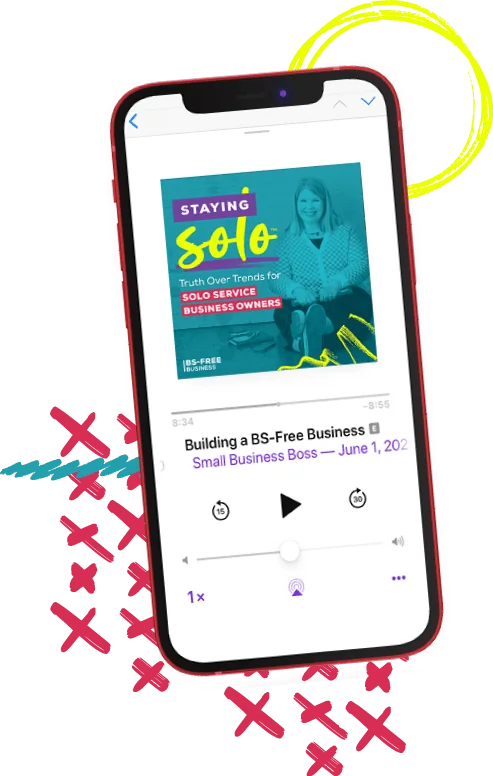
Growing a solo service business is tough.
It’s even harder when you’re bombarded with BS advice that steers you away from your values and why you started your business in the first place.
This is the podcast for solo creatives and consultants who want to remain as a team of one and have zero interest in the hustle and grind of typical business teachings.
Subscribe now and never miss an episode.
For Micro Agency Owners
Most podcasts for agency owners obsess over revenue growth as the ultimate success metric.
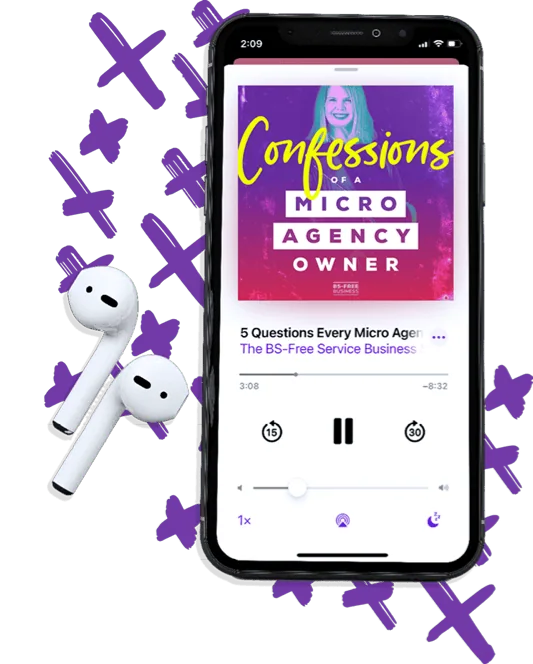
But here’s the truth: not everyone wants to make millions. Your goal might be to build a sustainable business that lets you have a life and doesn’t run you into the ground.
Join me as I spill my shameless confessions and share everything I’ve learned about building a micro agency that skips the BS of tired and typical agency teachings.
Follow Now on All Major Podcast Platforms


